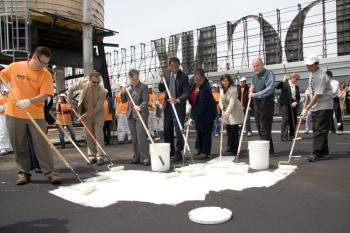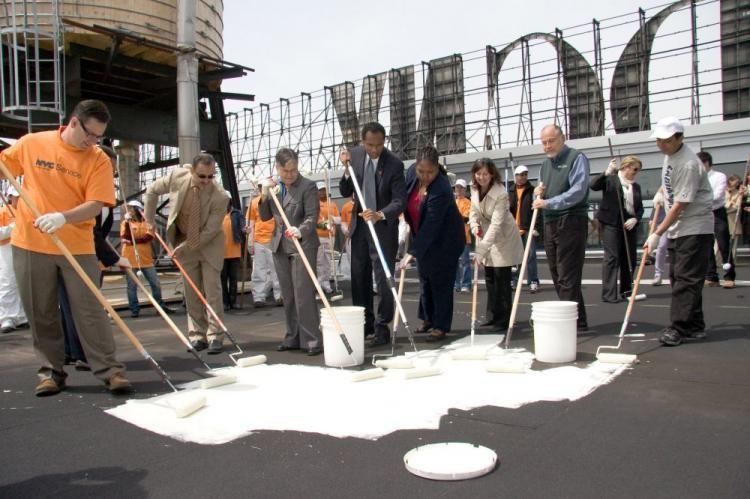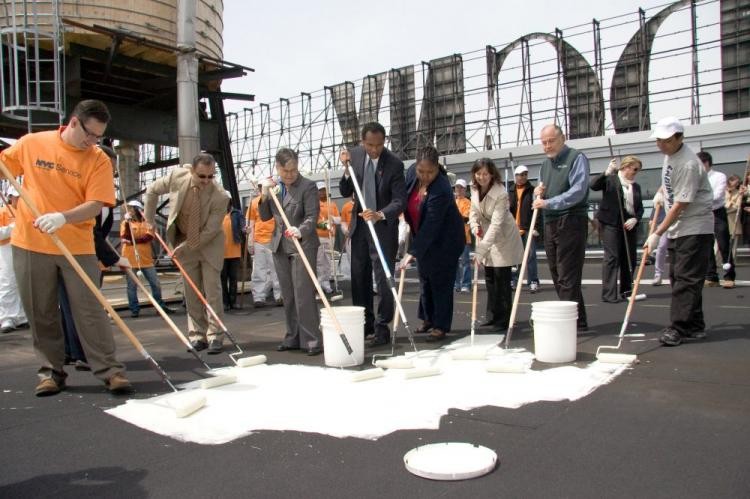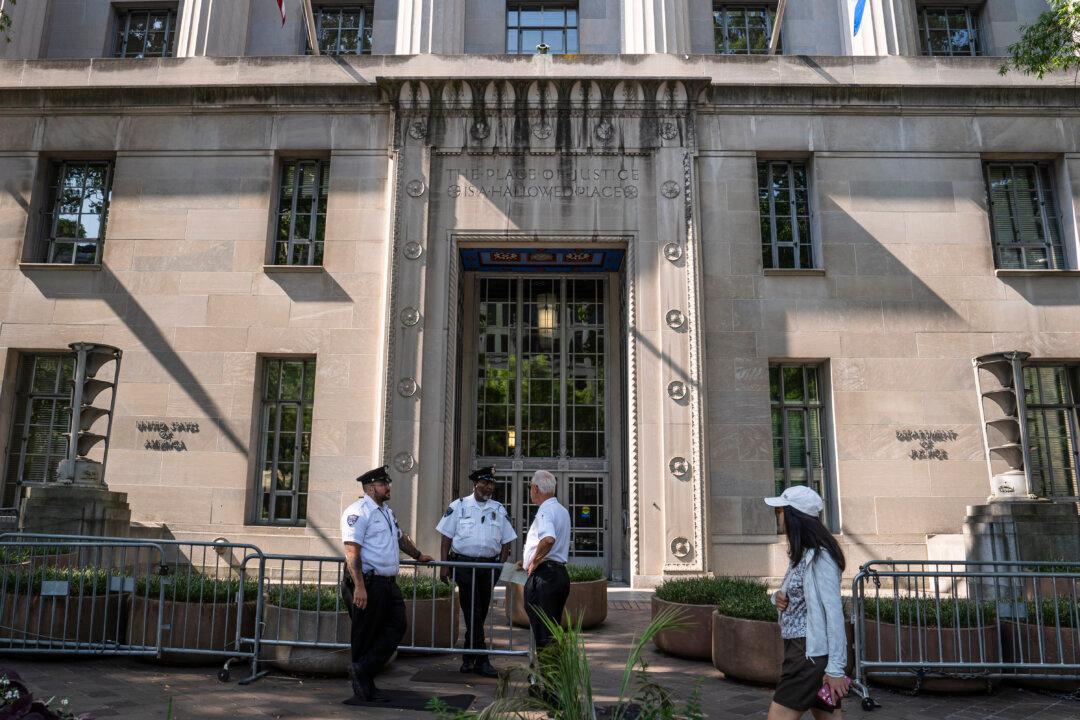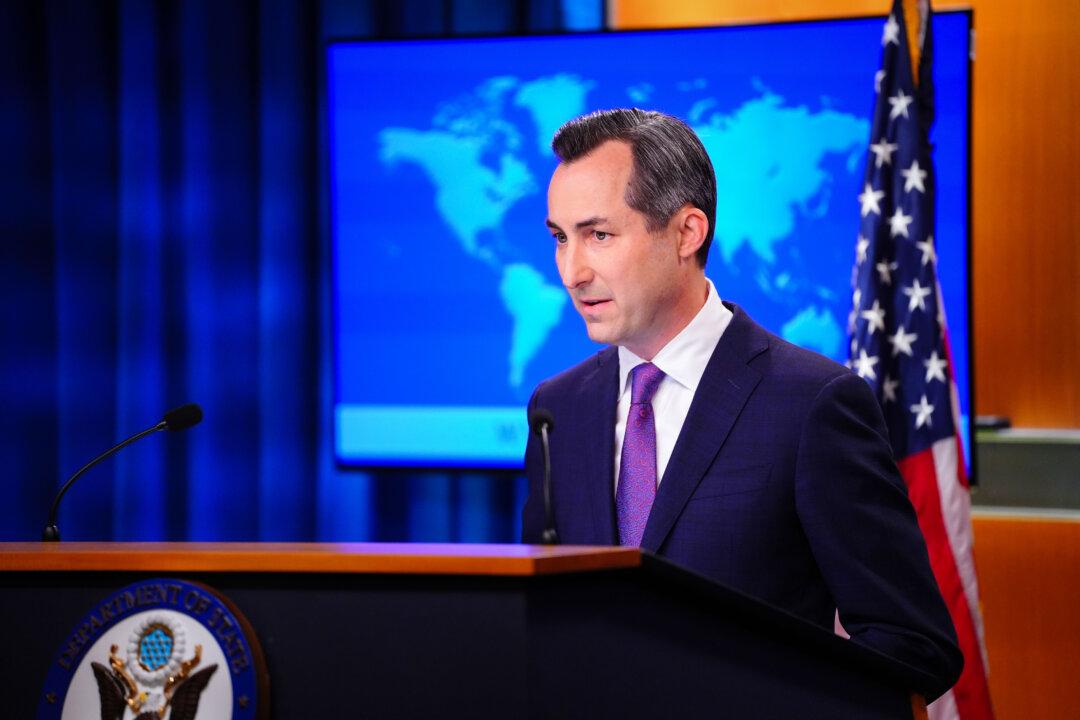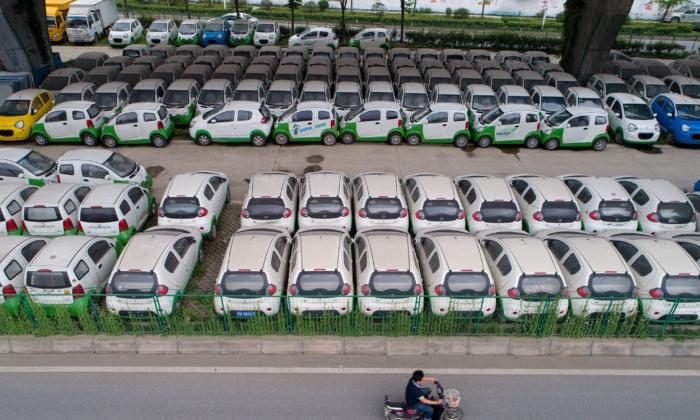NEW YORK—The New York City Department of Buildings will be painting 1 million square feet of rooftops white this summer to reduce carbon emissions.
The second season of the °CoolRoofs initiative began this week with 40 volunteers painting over 15,000 square feet of roof tops in Harlem with a white, reflective coating.
The reflective white absorbs 80 percent less heat than the normally dark-colored roof tops, and can lower indoor temperatures by up to 20 degrees. This helps cut energy use, lowers energy bills, and ultimately lowers carbon emissions.
“Volunteers were the key to coating a million square feet last season, and we fully expect to see the same enthusiasm this year from New Yorkers who want to make our city greener and greater by cooling rooftops,” said Chief Service Officer Diahann Billings-Burford.
Department of Buildings Commissioner Robert LiMandri encouraged building owners to take part in the project. “A simple rooftop coating can significantly reduce energy costs and lower the temperatures of your building, reducing the impact on your neighborhood and your wallet.”
This year, Google and ConEdison will take part in sponsoring the program, and both companies have encouraged their employees to volunteer during the coating process. Two hundred and fifty Google employees will coat nine buildings rooftops in Brooklyn and Manhattan in June, covering 65,000 square feet.
“Climate change continues to be one of the biggest, most challenging problems our planet faces, and we know that a sustained global effort is needed if we’re going to have any hope of reversing its effects,” said Alex Abelin, community affairs manager for Google in New York.
According to the Department of Buildings, converting a rooftop will typically pay for itself in three years in energy savings, not taking into account any labor costs because of the volunteers. Air conditioning costs can be halved in a one-story building and reduced by 10 percent in a five-story building.
Building owners who participated in the program last year are providing energy usage data, and Columbia University’s Climate System research center has set up a monitoring station in Queens to log information every 15 minutes.
The differences between black and white surface temperatures, incident and reflected sunlight, and heat radiation will be tracked over time to better assess the “urban heat island” effect of cities being warmer than their surrounding suburban and rural counterparts.
According to NYC Service, if all dark rooftops in NYC were coated with reflective white, it could result in a one-degree reduction in the ambient air temperature.
New Yorkers can join the initiative and cool their own roofs by following the informational guide that the city has posted on the nyc.gov website. In April, Mayor Michael Bloomberg signed a new law requiring all renovated and new rooftops to be at least half covered in reflective material if more than 500 square feet of the roof was renovated.
The second season of the °CoolRoofs initiative began this week with 40 volunteers painting over 15,000 square feet of roof tops in Harlem with a white, reflective coating.
The reflective white absorbs 80 percent less heat than the normally dark-colored roof tops, and can lower indoor temperatures by up to 20 degrees. This helps cut energy use, lowers energy bills, and ultimately lowers carbon emissions.
“Volunteers were the key to coating a million square feet last season, and we fully expect to see the same enthusiasm this year from New Yorkers who want to make our city greener and greater by cooling rooftops,” said Chief Service Officer Diahann Billings-Burford.
Department of Buildings Commissioner Robert LiMandri encouraged building owners to take part in the project. “A simple rooftop coating can significantly reduce energy costs and lower the temperatures of your building, reducing the impact on your neighborhood and your wallet.”
This year, Google and ConEdison will take part in sponsoring the program, and both companies have encouraged their employees to volunteer during the coating process. Two hundred and fifty Google employees will coat nine buildings rooftops in Brooklyn and Manhattan in June, covering 65,000 square feet.
“Climate change continues to be one of the biggest, most challenging problems our planet faces, and we know that a sustained global effort is needed if we’re going to have any hope of reversing its effects,” said Alex Abelin, community affairs manager for Google in New York.
According to the Department of Buildings, converting a rooftop will typically pay for itself in three years in energy savings, not taking into account any labor costs because of the volunteers. Air conditioning costs can be halved in a one-story building and reduced by 10 percent in a five-story building.
Building owners who participated in the program last year are providing energy usage data, and Columbia University’s Climate System research center has set up a monitoring station in Queens to log information every 15 minutes.
The differences between black and white surface temperatures, incident and reflected sunlight, and heat radiation will be tracked over time to better assess the “urban heat island” effect of cities being warmer than their surrounding suburban and rural counterparts.
According to NYC Service, if all dark rooftops in NYC were coated with reflective white, it could result in a one-degree reduction in the ambient air temperature.
New Yorkers can join the initiative and cool their own roofs by following the informational guide that the city has posted on the nyc.gov website. In April, Mayor Michael Bloomberg signed a new law requiring all renovated and new rooftops to be at least half covered in reflective material if more than 500 square feet of the roof was renovated.
